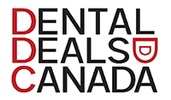Essential Tips for Optimal Oral Care
Good oral health is more than just having a picture-perfect smile; it's an essential aspect of overall wellness. Resources such as Canadian Dental Association and Oral-B Connect offer invaluable insights on this topic, and we've amalgamated these perspectives to present a comprehensive guide on maintaining oral health.
1. Brushing and Flossing: The Pillars of Oral Hygiene
- Why it’s crucial: Brushing and flossing dislodge food particles and counteract plaque, which can lead to cavities and gum ailments.
- The right tools: A soft-bristled brush is less abrasive on gums and enamel. Change it every 3-4 months or if the bristles fray. When flossing, be gentle to avoid harming your gums.
- Technique matters: Brush using a circular motion, ensuring you cover all surfaces. When flossing, slide the floss between teeth, following the curve of each tooth.
2. Setting and Monitoring Oral Care Goals
- The importance of tracking: Using tools or apps can be instrumental in ensuring consistent oral care. It serves as a daily reminder and helps identify areas that might need more attention.
- Setting challenges: Aim to extend your brushing time incrementally until you reach the recommended two minutes. Celebrate milestones, no matter how small, to foster motivation.
3. The Interplay Between Diet and Dental Health
- Sugar's role: Sugary foods and drinks can be detrimental. Bacteria in our mouth convert these sugars into acids, leading to cavities.
- Healthy choices: Integrate calcium-rich foods like dairy, lean proteins, whole grains, and fibrous fruits and vegetables into your diet. They not only benefit general health but also promote stronger teeth and gums.
- Snacking and oral health: Instead of frequent snacking, which can expose teeth to acids, try to stick to main meals. If you must snack, opt for healthier alternatives like nuts or raw veggies.
4. The Importance of Staying Hydrated
- Saliva's role: Saliva neutralizes acids and aids in food digestion. Staying hydrated ensures a steady saliva flow, safeguarding teeth from decay.
- Benefits of water: Regularly drinking water helps flush out lingering food particles, reducing the risk of bacterial buildup and acid erosion.
5. Regular Dental Visits: A Necessity, Not an Option
- Professional cleaning: No matter how diligent we are, some plaque can harden into tartar, which only a dentist can remove.
- Early detection: Regular dental examinations can help in early identification of potential issues like gum disease, cavities, or even oral cancer, ensuring timely intervention.
6. Safeguarding Your Teeth
- Mouthguards: Essential for those engaging in contact sports or activities where dental injury might occur. Consult your dentist for a perfect fit.
- Avoiding harmful habits: Biting on hard objects, like pens or ice, can lead to chipping or fractures. Being aware can save you a dental emergency.
7. The Risks of Smoking and Tobacco
- Beyond staining: Tobacco doesn’t just discolor teeth; it's a leading contributor to gum disease and oral cancer. Quitting can substantially decrease these risks.
- Oral manifestations: Smoking can lead to bad breath, diminished sense of taste, and delayed wound healing after dental procedures.
8. Gums: The Foundation of Dental Health
- Signs to watch for: Persistent bad breath, red or swollen gums, and bleeding during brushing might signal gum disease.
- Regular gum checks: During dental visits, ensure your gums are checked. Early intervention can prevent further complications.
9. Initiating Early Oral Care in Children
- Baby steps: Even before teething, cleaning a baby's gums with a soft cloth can pave the way for good oral hygiene habits.
- Educate and engage: Make dental care fun for children. Use flavored toothpaste or toothbrushes with their favorite characters to make it an enjoyable routine.
10. Considering Additional Protective Measures
- Sealants: These are thin protective coatings applied to the back teeth’s chewing surfaces, acting as a shield against decay.
- Fluoride treatments: They strengthen teeth and make them more resistant to acid attacks.

